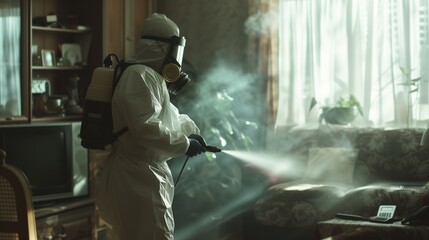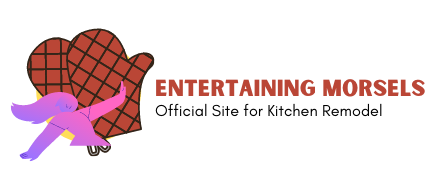Managing Pest Populations – Strategies For Effective Pest Control
Preventative methods include inspecting incoming materials for pests, keeping food storage areas and garbage receptacles clean, and sealing cracks around doors and windows. Physical exclusion techniques include screens, floating row covers, and barriers to movement like wire mesh.
Biological control includes pathogens that infect or kill pests, natural predators (like lady beetles which eat aphids), parasitoids that infest and attack target species, and sterile males to interrupt reproduction cycles. Contact your local Bakersfield Pest Control expert today!
Using the philosophy of “an ounce of prevention is worth a pound of cure,” preventive steps help keep pests from becoming a problem. This includes keeping landscapes, structures, and property well maintained to limit the conditions that promote pest infestation. It also includes sealing entry points and removing potential habitats. Regular mowing, trimming bushes and other vegetation, and preventing overgrowth reduce hiding places for pests and the opportunity for them to spread. It is important to regularly empty outdoor trash cans and fix leaky plumbing to minimize the accumulation of water that can attract mosquitoes, rodents, and other pests. Cleaning up food spills and crumbs quickly can deter ants, roaches, and other pests.
If a pest problem is already evident, preventive actions may be combined with suppression and eradication strategies to control the pest population. Suppression methods reduce pest numbers to an acceptable level and can include many different types of cultural practices, biological controls, or chemical control agents. Eradication methods destroy an entire pest population and often require regulatory controls.
Preventive measures can be economically and environmentally responsible, but some pest situations require more aggressive treatment tactics. Whenever possible, technicians should prioritize prevention to eliminate the need for more intensive treatments. This empowers the technician to maintain environmentally conscious practices and responsibilities while limiting the need for chemicals, which can be harmful to people, pets, other organisms, or the environment.
Natural forces, such as climate, the availability of food and water, natural enemies, and natural barriers, all influence pest populations. Understanding the ecology of a pest can help technicians develop more effective control strategies and use minimal intervention to maximize sustainability.
Some pests are continuous, such as weeds or invasive trees that always need attention; others are sporadic, such as migratory and cyclical insects; and still, others are potential pests that could become problematic under certain circumstances. In these cases, understanding the factors that trigger a pest infestation can help you take action before it occurs. For example, poor soil conditions and excessive ground disturbance foster ideal habitats for weed plants. Understanding a weed’s life cycle and growth habits can help you determine when to apply preemergent herbicides.
Suppression
If prevention is not possible, the goal of pest management is suppression. Some pests — particularly continuous or migratory species such as Japanese beetles or gypsy moths — have few natural enemies in the new regions where they invade, and control must depend on other means.
To suppress a pest population, you must deny it the food, shelter, or other necessities that allow it to grow and reproduce. The use of physical barriers and other mechanical controls can be a good way to manage some pests, such as putting out salt to prevent slugs from feeding on plants or covering the soil with crushed eggshells or hydrated lime to discourage weeds. Chemicals that repel or alter the environment also can help suppress pest populations.
Sanitation practices can reduce pest populations in urban or industrial settings. For example, keeping garbage bins clean and picking up discarded containers can discourage rodents from moving in and out of an area. Similarly, keeping the soil moist and eliminating clutter can keep insects away from vegetables and flowers. Using sanitation tactics can also help limit the transfer of plant diseases between locations or from one crop to another, which is especially important for crops that are grown in greenhouses or health care, food processing, or other sterile areas.
Biological control tactics, such as the deliberate release of predators, parasitoids, or pathogens that target specific pests, can be effective for some problems. Generally, however, it is necessary to carefully study the needs of each pest to develop an appropriate plan.
Integrated pest management, the use of many different tactics to control a particular pest problem, is more effective than relying on a single tactic. Using only pesticides, for instance, can cause the development of resistance in pests and damage surfaces or nonliving organisms nearby. Rotating the types of pesticides used helps minimize resistance. When you use a pesticide, be sure to follow the label directions. If you don’t, the pesticide may not be as effective and could harm plants or hurt people. The most effective methods of controlling pests involve the least disruption to living and nonliving organisms.
Detection
Detecting pests before they cause damage is the goal of preventative management. This involves inspecting incoming materials for pest contamination, limiting access points into a facility, and maintaining sanitary conditions. It also includes regularly emptying outdoor trash receptacles, keeping food in containers with tight-fitting lids, and fixing leaky pipes.
Scouting and monitoring for pests should be routine, depending on the type of pest and environment. For example, when mosquitoes are a problem in residential settings, walk the property regularly, checking for water sources (puddles, standing water) and places where they may lay eggs — woodpiles, along foundations, under leaves, or at bait stations.
Once a pest infestation has been detected, a strategy for control must be developed. This approach is based on the pest’s life cycle and damage potential, and it can include prevention, suppression, or eradication methods. Prevention is the most desirable method because it doesn’t require control products and minimizes damage to the environment and people.
Pest prevention strategies can be natural, biological, or chemical and may involve sanitation, physical exclusion, microbial controls, and mating disruption. Sanitation techniques include regularly cleaning food storage areas and garbage receptacles, sealing cracks and openings where pests might enter a structure, and installing screens on windows and doors. Biological pest control uses organisms that naturally injure or consume target pest species to reduce their populations. Examples of these include the release of parasitoids, predators, or pathogens to kill or injure target pests. Phytopathogens, which contain disease-causing bacteria or viruses, are especially useful for controlling many caterpillar species by targeting the insects’ midguts.
Suppression techniques limit pest activity and population growth to unacceptable levels, and they can be used in conjunction with prevention strategies. Chemical treatments include sanitizers and repellents, as well as toxicants that kill or injure target pests. Some of these chemicals are extremely hazardous, so they must be used carefully and in compliance with all applicable state and federal regulations. For example, when using pesticides, re-entry intervals must be observed to allow employees and others to return to the treatment area after spraying.
Eradication
Eradication is the ultimate goal of pest control. It means eliminating all of the pests in an area, and thereby preventing them from ever returning. It is the most difficult and expensive of all control strategies.
In general, eradication strategies focus on controlling the factors that allow pests to grow and reproduce. For example, using pest-free seeds and transplants, avoiding irrigation scheduling conditions that promote disease development, cleaning tillage and harvesting equipment between fields or operations, and eliminating alternative hosts or sites for insect pests can all reduce the risk of infestation and help prevent recurrence.
Biological control tactics use natural predators, parasitoids, and pathogens to manage or kill unwanted organisms. They can be applied individually or in combination with other controls. Typically, biological control agents are released in large numbers to quickly overwhelm the pest population. This approach is sometimes called inundative release. The release may occur in an open field or a sample patch of the pest-affected crop.
Predators and parasitoids are the most commonly used biological control agents. They are usually specific to a particular pest and often provide better control than chemicals. Bacteria that produce toxins, such as Bt (Bacillus thuringiensis), are also effective. They can kill caterpillars, mosquitoes, and several other pests without damaging people or plants.
Another type of biological control agent is a pheromone, which attracts or confuses the target organism. Pheromones can be manufactured or naturally produced, such as the pheromones that female insects produce to lure males. In some cases, pheromones can be used to confuse or deter males from mating with females, which reduces pest numbers.
Many growers and green industry professionals are searching for alternative pest management tactics to replace or reduce the need for chemical controls. Consumers are concerned about the negative health and environmental impacts of chemical pesticides. Many growers are experimenting with or considering organic management options.
In addition to environmental concerns, a primary driver of organic management is the desire to avoid the use of synthetic chemicals. This is particularly important near water bodies because most pesticides, whether natural or synthetic, negatively impact aquatic or semi-aquatic ecosystems.
